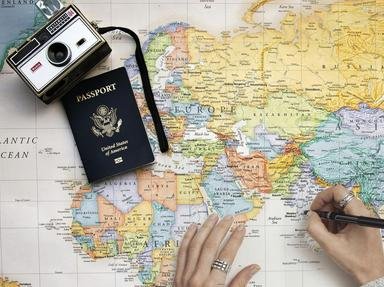Quiz Answer Key and Fun Facts
1. What small island nation in the South Pacific - a former Anglo-French colony once known as New Hebrides - often tops the list of countries most at risk of natural disasters?
2. Three of the world's largest island nations - Indonesia, Japan, and the Philippines - also rank high on the list of the most disaster-prone countries. What natural danger would you associate with the names Tambora, Pinatubo, and Unzen?
3. What large body of water in the Indian Ocean, around which hundreds of millions of people live, is particularly prone to devastating cyclones?
4. What large, populous country is in constant danger of flooding by its mighty rivers, and was also hit by two of the world's deadliest recorded earthquakes?
5. What metropolis, the capital of a Middle Eastern country that was once the heart of a large empire, is located in a dangerously earthquake-prone area?
6. What country in Southeast Europe, with coastlines on the Adriatic and Ionian Seas, is considered the continent's most prone to natural disasters?
7. What vast, belt-shaped region of Africa, located south of the Sahara Desert, is known for devastating droughts that can last for decades?
8. What Central American country, known for its vestiges of the Mayan civilization, is situated in an area where three tectonic plates come together - making it susceptible to earthquakes and volcanic eruptions?
9. What destructive natural hazards are particularly common in parts of the world such as California, Australia, Siberia, and the Mediterranean region?
10. Like Southeast Asia and Oceania, the Caribbean is also highly susceptible to natural disasters. What island nation, one of the poorest countries in the Americas, has been repeatedly hit by floods, hurricanes, and particularly destructive earthquakes?
Source: Author
LadyNym
This quiz was reviewed by FunTrivia editor
agony before going online.
Any errors found in FunTrivia content are routinely corrected through our feedback system.
